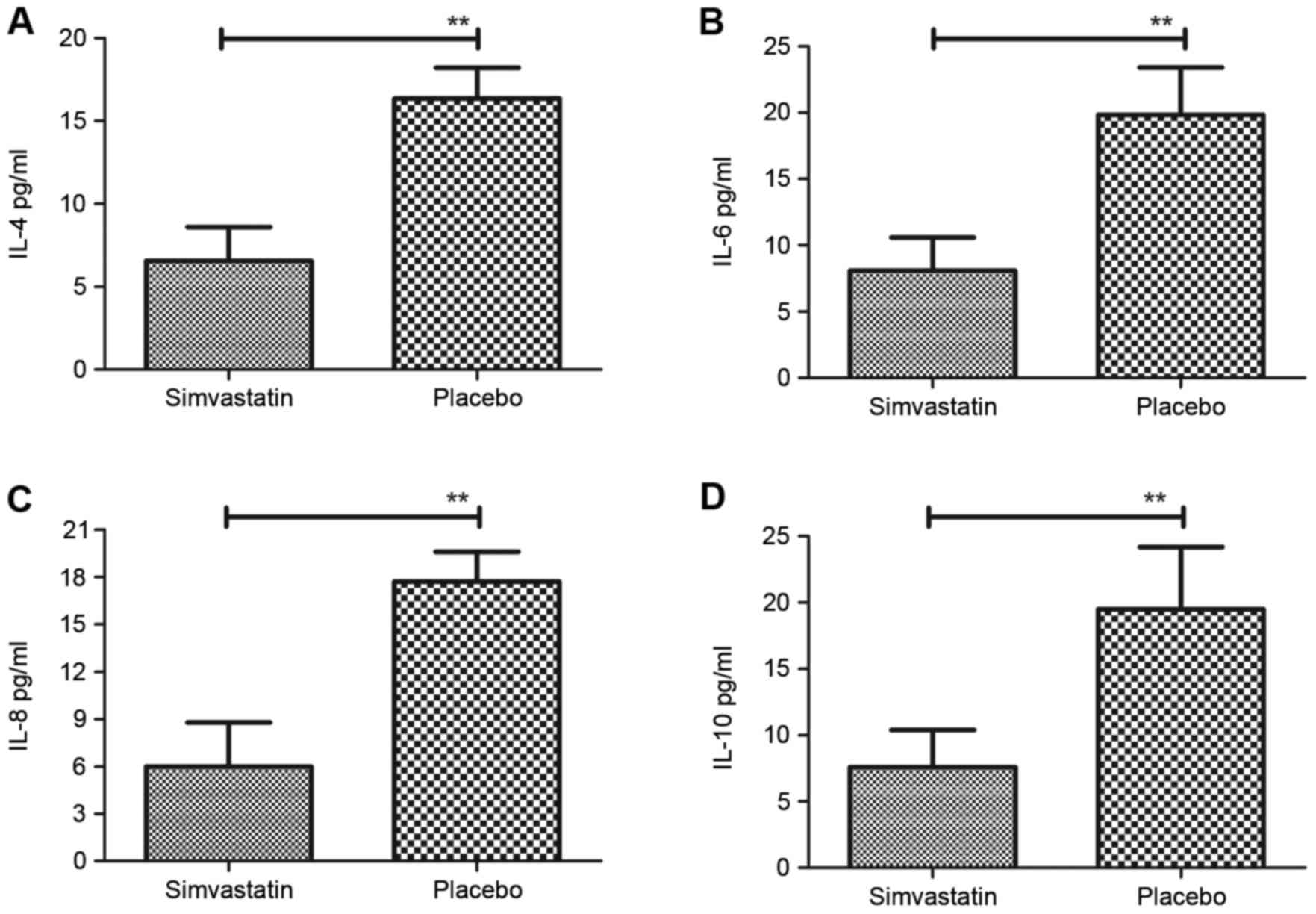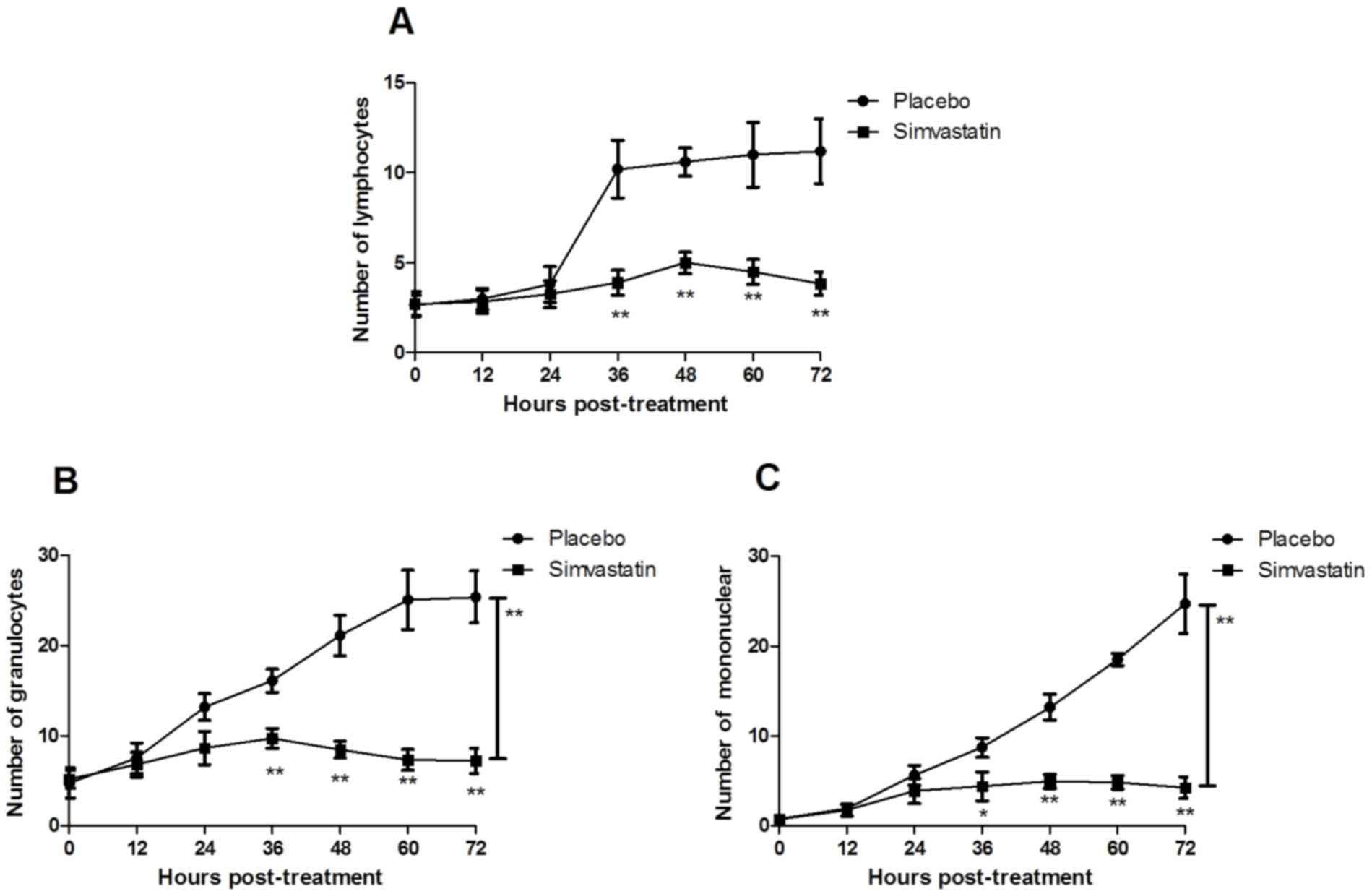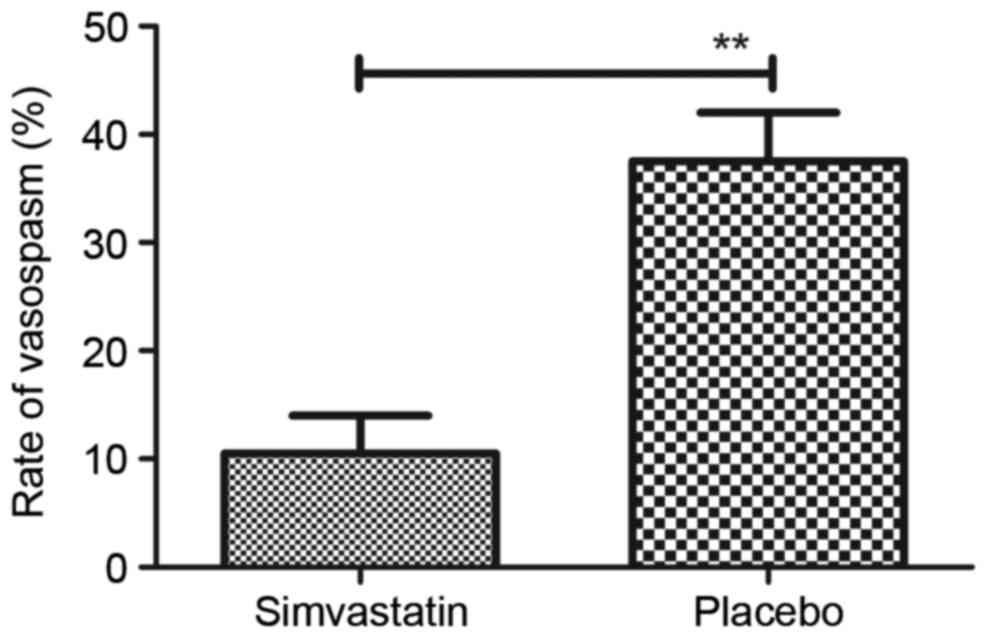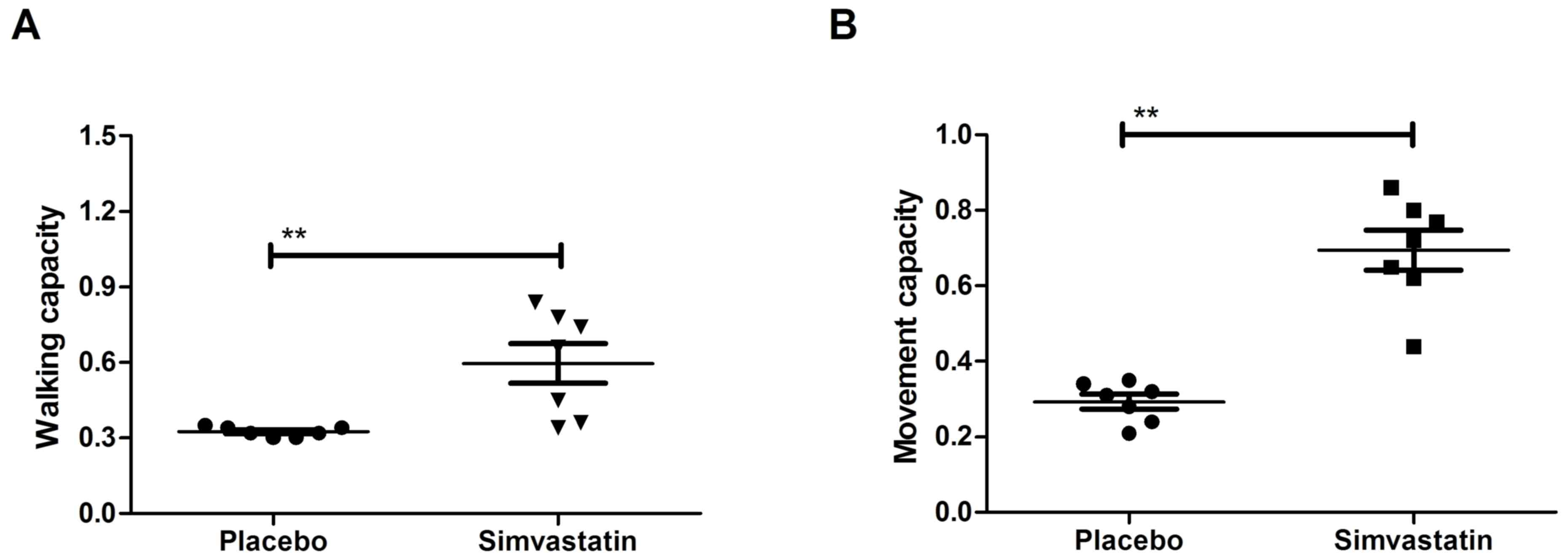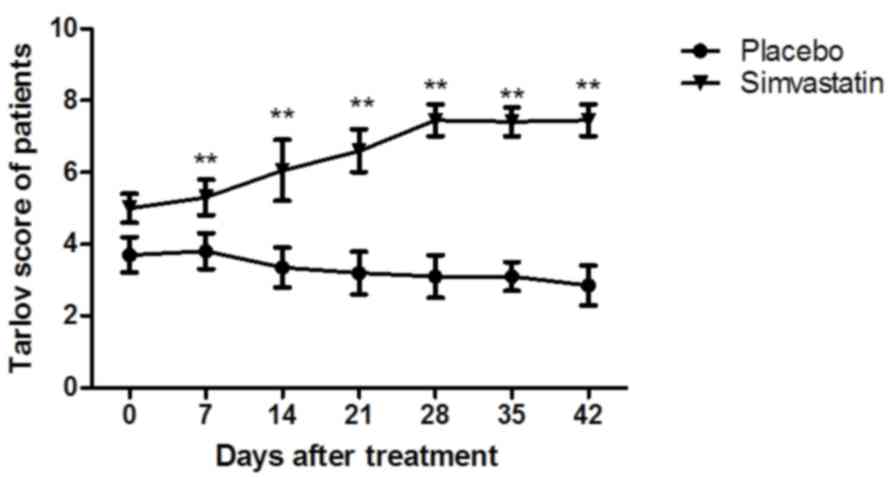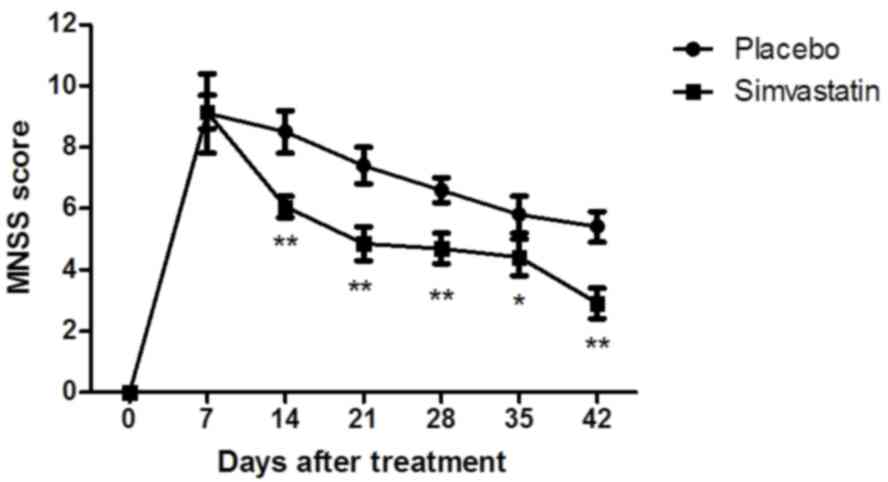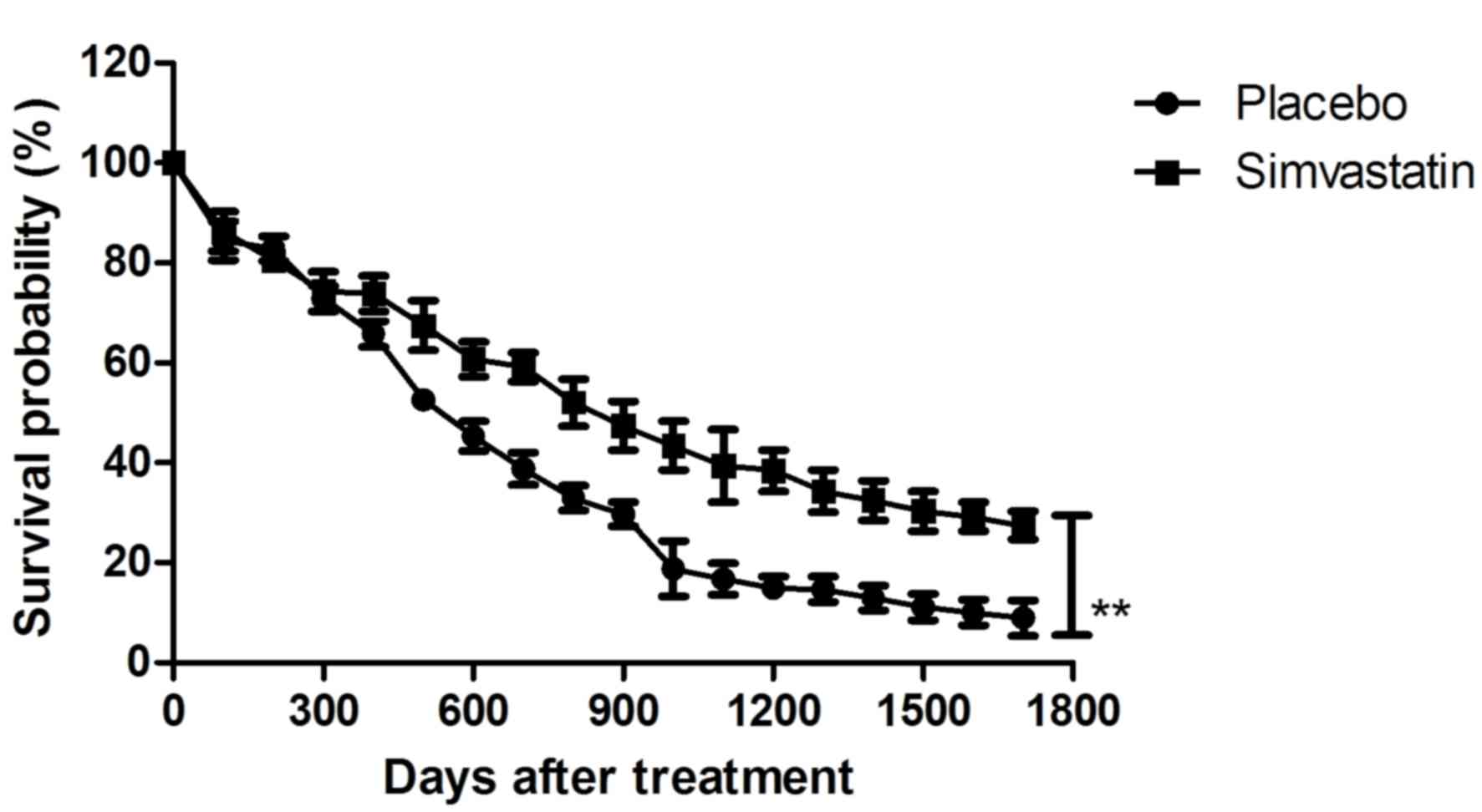|
1
|
Sussman ES and Connolly ES Jr: Hemorrhagic
transformation: A review of the rate of hemorrhage in the major
clinical trials of acute ischemic stroke. Front Neurol. 4:692013.
View Article : Google Scholar : PubMed/NCBI
|
|
2
|
Kobayashi T, Tadokoro H, Odai T, Hibino T
and Waki K: A delayed cerebral vasospasm with infarction is
secondary to listeria monocytogenes meningitis: MRI and MRA are
diagnostically useful. Intern Med. 54:2935–2938. 2015. View Article : Google Scholar : PubMed/NCBI
|
|
3
|
Lee WJ, Yeon JY, Jo KI, Kim JS and Hong
SC: Reversible cerebral vasoconstriction syndrome and posterior
reversible encephalopathy syndrome presenting with deep
intracerebral hemorrhage in young women. J Cerebrovasc Endovasc
Neurosurg. 17:239–245. 2015. View Article : Google Scholar : PubMed/NCBI
|
|
4
|
Kanamaru K, Suzuki H and Taki W: Cerebral
infarction after aneurysmal subarachnoid hemorrhage. Acta Neurochir
Suppl. 121:167–172. 2016. View Article : Google Scholar : PubMed/NCBI
|
|
5
|
Brown RJ, Epling BP, Staff I, Fortunato G,
Grady JJ and McCullough LD: Polyuria and cerebral vasospasm after
aneurysmal subarachnoid hemorrhage. BMC Neurol. 15:2012015.
View Article : Google Scholar : PubMed/NCBI
|
|
6
|
Jenson AV, Rodriguez GJ, Alvarado LA,
Cruz-Flores S and Maud A: Higher rate of intracerebral hemorrhage
in hispanic patients with cerebral Cavernous Malformation. J Vasc
Interv Neurol. 8:1–4. 2015.PubMed/NCBI
|
|
7
|
Dabus G and Nogueira RG: Current options
for the management of aneurysmal subarachnoid hemorrhage-induced
cerebral vasospasm: A comprehensive review of the literature.
Interv Neurol. 2:30–51. 2013. View Article : Google Scholar : PubMed/NCBI
|
|
8
|
Sehba FA, Pluta RM and Macdonald RL: Brain
injury after transient global cerebral ischemia and subarachnoid
hemorrhage. Stroke Res Treat. 2013:8271542013.PubMed/NCBI
|
|
9
|
Matsumoto H and Yoshida Y: Rapid
progression of cerebral infarction after intraventricular
hemorrhage in adult moyamoya disease. J Korean Neurosurg Soc.
54:411–414. 2013. View Article : Google Scholar : PubMed/NCBI
|
|
10
|
Medeiros de Bustos E and Moulin T: French
Society of Intensive Care: Specific treatment for intracerebral
hemorrhage. Experts' recommendations: Stroke management in the
intensive care unit. Rev Neurol (Paris). 168:522–526. 2012.(In
French). PubMed/NCBI
|
|
11
|
Ohwaki K, Yano E, Nagashima H, Nakagomi T
and Tamura A: Impact of infection on length of intensive care unit
stay after intracerebral hemorrhage. Neurocrit Care. 8:271–275.
2008. View Article : Google Scholar : PubMed/NCBI
|
|
12
|
Ma L, Shen X, Gao Y, Wu Q, Ji M, Luo C,
Zhang M, Wang T, Chen X and Tao L: Blocking B7-1/CD28 pathway
diminished long-range brain damage by regulating the immune and
inflammatory responses in a mouse model of intracerebral
hemorrhage. Neurochem Res. 41:1673–1683. 2016. View Article : Google Scholar : PubMed/NCBI
|
|
13
|
Boehme AK, Hays AN, Kicielinski KP, Arora
K, Kapoor N, Lyerly MJ, Gadpaille A, Shiue H, Albright K, Miller D,
et al: Systemic inflammatory response syndrome and outcomes in
intracerebral hemorrhage. Neurocrit Care. 25:133–140. 2016.
View Article : Google Scholar : PubMed/NCBI
|
|
14
|
Schuiling WJ, Dennesen PJ and Rinkel GJ:
Extracerebral organ dysfunction in the acute stage after aneurysmal
subarachnoid hemorrhage. Neurocrit care. 3:1–10. 2005. View Article : Google Scholar : PubMed/NCBI
|
|
15
|
McGirt MJ, Mavropoulos JC, McGirt LY,
Alexander MJ, Friedman AH, Laskowitz DT and Lynch JR: Leukocytosis
as an independent risk factor for cerebral vasospasm following
aneurysmal subarachnoid hemorrhage. J Neurosurg. 98:1222–1226.
2003. View Article : Google Scholar : PubMed/NCBI
|
|
16
|
Panichi V, Paoletti S, Mantuano E,
Manca-Rizza G, Filippi C, Santi S, Taccola D, Donadio C, Tramonti
G, Innocenti M, et al: In vivo and in vitro effects of simvastatin
on inflammatory markers in pre-dialysis patients. Nephrol Dial
Transplant. 21:337–344. 2006. View Article : Google Scholar : PubMed/NCBI
|
|
17
|
Montazerolghaem M, Ning Y, Engqvist H,
Karlsson Ott M, Tenje M and Mestres G: Simvastatin and zinc
synergistically enhance osteoblasts activity and decrease the acute
response of inflammatory cells. J Mater Sci Mater Med. 27:232016.
View Article : Google Scholar : PubMed/NCBI
|
|
18
|
Encarnação IC, Xavier CC, Bobinski F, dos
Santos AR, Corrêa M, de Freitas SF, Aragonez A, Goldfeder EM and
Cordeiro MM: Analysis of bone repair and inflammatory process
caused by simvastatin combined with PLGA+HA+βTCP Scaffold. Implant
Dent. 25:140–148. 2016. View Article : Google Scholar : PubMed/NCBI
|
|
19
|
Shahbazian H, Atrian A, Yazdanpanah L,
Lashkarara GR and Mohtashami Zafar A: Anti-inflammatory effect of
simvastatin in hemodialysis patients. Jundishapur J Nat Pharm Prod.
10:e179622015. View Article : Google Scholar : PubMed/NCBI
|
|
20
|
Bartolomé F, Muñoz U, Esteras N, Alquezar
C, Collado A, Bermejo-Pareja F and Martín-Requero A: Simvastatin
overcomes the resistance to serum withdrawal-induced apoptosis of
lymphocytes from Alzheimer's disease patients. Cell Mol Life Sci.
67:4257–4268. 2010. View Article : Google Scholar : PubMed/NCBI
|
|
21
|
Pinchuk TV, Fedulaev YN, Khairetdinova GA,
Denisova NN, Chura OV and Logunova IY: Anti-inflammatory effects of
simvastatin in patients with chronic heart failure. Bull Exp Biol
Med. 157:552–554. 2014. View Article : Google Scholar : PubMed/NCBI
|
|
22
|
Lacerda L, Reddy JP, Liu D, Larson R, Li
L, Masuda H, Brewer T, Debeb BG, Xu W, Hortobágyi GN, et al:
Simvastatin radiosensitizes differentiated and stem-like breast
cancer cell lines and is associated with improved local control in
inflammatory breast cancer patients treated with postmastectomy
radiation. Stem Cells Transl Med. 3:849–856. 2014. View Article : Google Scholar : PubMed/NCBI
|
|
23
|
Guan C, Liu W, Yue Y, Jin H, Wang X and
Wang XJ: Inhibitory effect of β-elemene on human breast cancer
cells. Int J Clin Exp Pathol. 7:3948–3956. 2014.PubMed/NCBI
|
|
24
|
Kirmizis D, Papagianni A, Dogrammatzi F,
Efstratiadis G and Memmos D: Anti-inflammatory effects of
simvastatin in diabetic compared to non-diabetic patients on
chronic hemodialysis. J Diabetes. 5:492–494. 2013. View Article : Google Scholar : PubMed/NCBI
|
|
25
|
Sugawara T, Ayer R, Jadhav V, Chen W,
Tsubokawa T and Zhang JH: Simvastatin attenuation of cerebral
vasospasm after subarachnoid hemorrhage in rats via increased
phosphorylation of Akt and endothelial nitric oxide synthase. J
Neurosci Res. 86:3635–3643. 2008. View Article : Google Scholar : PubMed/NCBI
|
|
26
|
McGirt MJ, Lynch JR, Parra A, Sheng H,
Pearlstein RD, Laskowitz DT, Pelligrino DA and Warner DS:
Simvastatin increases endothelial nitric oxide synthase and
ameliorates cerebral vasospasm resulting from subarachnoid
hemorrhage. Stroke. 33:2950–2956. 2002. View Article : Google Scholar : PubMed/NCBI
|
|
27
|
Teoh EJ, McGowan DR, Bradley KM, Belcher
E, Black E, Moore A, Sykes A and Gleeson FV: 18F-FDG PET/CT
assessment of histopathologically confirmed mediastinal lymph nodes
in non-small cell lung cancer using a penalised likelihood
reconstruction. Eur Radiol. 26:4098–4106. 2016. View Article : Google Scholar : PubMed/NCBI
|
|
28
|
Matsukawa H, Tanikawa R, Kamiyama H,
Tsuboi T, Noda K, Ota N, Miyata S, Suzuki G, Takeda R and Tokuda S:
Effects of Clot removal by meticulous irrigation and continuous
low-dose intravenous nicardipine on symptomatic cerebral vasospasm
in patients with aneurysmal subarachnoid hemorrhage treated by
clipping. World Neurosurg. 84:1798–1803. 2015. View Article : Google Scholar : PubMed/NCBI
|
|
29
|
Filipova J, Rihova L, Vsianska P, Kufova
Z, Kryukova E, Kryukov F and Hajek R: Flow cytometry in
immunoglobulin light chain amyloidosis: Short review. Leuk Res. Jul
13–2015.(Epub ahead of print). View Article : Google Scholar : PubMed/NCBI
|
|
30
|
Sreekrishnan A, Dearborn JL, Greer DM, Shi
FD, Hwang DY, Leasure AC, Zhou SE, Gilmore EJ, Matouk CC, Petersen
NH, et al: Intracerebral hemorrhage location and functional
outcomes of patients: A systematic literature review and
meta-analysis. Neurocrit Care. 25:384–391. 2016. View Article : Google Scholar : PubMed/NCBI
|
|
31
|
Rannikmäe K, Woodfield R, Anderson CS,
Charidimou A, Chiewvit P, Greenberg SM, Jeng JS, Meretoja A, Palm
F, Putaala J, et al: Reliability of intracerebral hemorrhage
classification systems: A systematic review. Int J Stroke.
11:626–636. 2016. View Article : Google Scholar : PubMed/NCBI
|
|
32
|
Pittella JE and da Silva Gusmão SN:
Intracerebral hemorrhage due to cerebral amyloid angiopathy after
head injury: Report of a case and review of the literature.
Neuropathology. 36:566–572. 2016. View Article : Google Scholar : PubMed/NCBI
|
|
33
|
Karki K, Knight RA, Han Y, Yang D, Zhang
J, Ledbetter KA, Chopp M and Seyfried DM: Simvastatin and
atorvastatin improve neurological outcome after experimental
intracerebral hemorrhage. Stroke. 40:3384–3389. 2009. View Article : Google Scholar : PubMed/NCBI
|
|
34
|
Shao H, Shen Y, Liu H, Dong G, Qiang J and
Jing H: Simvastatin suppresses lung inflammatory response in a rat
cardiopulmonary bypass model. Ann Thorac Surg. 84:2011–2018. 2007.
View Article : Google Scholar : PubMed/NCBI
|
|
35
|
Wang KW, Cho CL, Chen HJ, Liang CL,
Liliang PC, Tsai YD, Wang HK and Lu K: Molecular biomarker of
inflammatory response is associated with rebleeding in spontaneous
intracerebral hemorrhage. Eur Neurol. 66:322–327. 2011. View Article : Google Scholar : PubMed/NCBI
|
|
36
|
Chamnanvanakij S, Margraf LR, Burns D and
Perlman JM: Apoptosis and white matter injury in preterm infants.
Pediatr Dev Pathol. 5:184–189. 2002. View Article : Google Scholar : PubMed/NCBI
|
|
37
|
Riggs AJ and Riggs JE: Epilepsy's role in
the historical differentiation of religion, magic, and science.
Epilepsia. 46:452–453. 2005. View Article : Google Scholar : PubMed/NCBI
|
|
38
|
Gao F, Guo Y, Zhang H, Wang S, Wang J, Wu
JM, Chen Z and Ding MP: Anterior thalamic nucleus stimulation
modulates regional cerebral metabolism: An FDG-MicroPET study in
rats. Neurobiol Dis. 34:477–483. 2009. View Article : Google Scholar : PubMed/NCBI
|
|
39
|
Guo FQ, Li XJ, Chen LY, Yang H, Dai HY,
Wei YS, Huang YL, Yang YS, Sun HB, Xu YC and Yang ZL: Study of
relationship between inflammatory response and apoptosis in
perihematoma region in patients with intracerebral hemorrhage.
Zhongguo Wei Zhong Bing Ji Jiu Yi Xue. 18:290–293. 2006.(In
Chinese). PubMed/NCBI
|
|
40
|
Loftspring MC, Johnson HL, Feng R, Johnson
AJ and Clark JF: Unconjugated bilirubin contributes to early
inflammation and edema after intracerebral hemorrhage. J Cereb
Blood Flow Metab. 31:1133–1142. 2011. View Article : Google Scholar : PubMed/NCBI
|
|
41
|
Wang J: Preclinical and clinical research
on inflammation after intracerebral hemorrhage. Prog Neurobiol.
92:463–477. 2010. View Article : Google Scholar : PubMed/NCBI
|
|
42
|
Liao W, Zhong J, Yu J, Xie J, Liu Y, Du L,
Yang S, Liu P, Xu J, Wang J, et al: Therapeutic benefit of human
umbilical cord derived mesenchymal stromal cells in intracerebral
hemorrhage rat: Implications of anti-inflammation and angiogenesis.
Cell Physiol Biochem. 24:307–316. 2009. View Article : Google Scholar : PubMed/NCBI
|
|
43
|
Lee ST, Chu K, Sinn DI, Jung KH, Kim EH,
Kim SJ, Kim JM, Ko SY, Kim M and Roh JK: Erythropoietin reduces
perihematomal inflammation and cell death with eNOS and STAT3
activations in experimental intracerebral hemorrhage. J Neurochem.
96:1728–1739. 2006. View Article : Google Scholar : PubMed/NCBI
|
|
44
|
Wu L and Chen G: Signaling pathway in
cerebral vasospasm after subarachnoid hemorrhage: News update. Acta
Neurochir Suppl. 121:161–165. 2016. View Article : Google Scholar : PubMed/NCBI
|
|
45
|
Diringer MN, Dhar R, Scalfani M, Zazulia
AR, Chicoine M, Powers WJ and Derdeyn CP: Effect of high-dose
simvastatin on cerebral blood flow and static autoregulation in
subarachnoid hemorrhage. Neurocrit Care. 25:56–63. 2016. View Article : Google Scholar : PubMed/NCBI
|
|
46
|
McGirt MJ, Ambrossi Garces GL, Huang J and
Tamargo RJ: Simvastatin for the prevention of symptomatic cerebral
vasospasm following aneurysmal subarachnoid hemorrhage: A
single-institution prospective cohort study. J Neurosurg.
110:968–974. 2009. View Article : Google Scholar : PubMed/NCBI
|
|
47
|
Kidwell CS, Chalela JA, Saver JL, Starkman
S, Hill MD, Demchuk AM, Butman JA, Patronas N, Alger JR, Latour LL,
et al: Comparison of MRI and CT for detection of acute
intracerebral hemorrhage. JAMA. 292:1823–1830. 2004. View Article : Google Scholar : PubMed/NCBI
|
|
48
|
Roever L and Levine SR: Cerebral
hemorrhage following thrombolytic therapy for stroke: Are
neutrophils really neutral? Neurology. 85:1360–1361. 2015.
View Article : Google Scholar : PubMed/NCBI
|
|
49
|
Wang DN, Hou XW, Yang BW, Lin Y, Shi JP
and Wang N: Quantity of cerebral microbleeds, antiplatelet therapy,
and intracerebral hemorrhage outcomes: A systematic review and
meta-analysis. J Stroke Cerebrovasc Dis. 24:2728–2737. 2015.
View Article : Google Scholar : PubMed/NCBI
|
|
50
|
Zhou HX, Gao LH, Meng LL, Zhang YX, Wei ZF
and Si DW: Preventive and therapeutic effect of simvastatin on
secondary inflammatory damage of rats with cerebral hemorrhage.
Asian Pac J Trop Med. 10:152–156. 2017. View Article : Google Scholar : PubMed/NCBI
|
|
51
|
Lin C, Zhao Y, Wan G, Zhu A and Wang H:
Effects of simvastatin and taurine on delayed cerebral vasospasm
following subarachnoid hemorrhage in rabbits. Exp Ther Med.
11:1355–1360. 2016. View Article : Google Scholar : PubMed/NCBI
|















